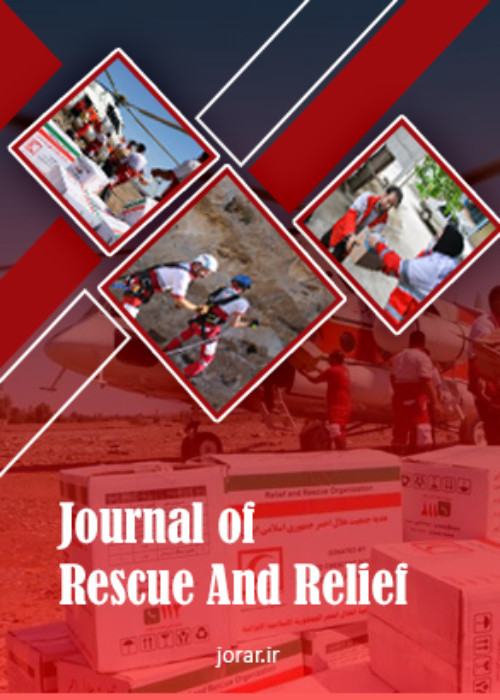Investigating the Challenges of Rapid Relief in Earthquake Crisis Management (Case study: Sisakht region of Kohgiluyeh and Boyer-Ahmad province)
Today, most developed countries have considered natural disasters a part of their urban and regional planning and believe that preventing natural disasters is the best way to deal with them. Extensive natural disasters, especially in large cities, are always associated with negative consequences and disorder. Meanwhile, the role of specialized forces becomes extremely limited in quantity to save the lives of those trapped under the rubble and provide rapid relief to the injured because the factors of time and physical extent of the disaster play key roles in the success of the rescue operation.
This applied research was conducted based on a descriptive-correlational design. In this study, the location of the city of Sisakht city, Kohgiluyeh and Boyer-Ahmad Province, Iran, at the time of the earthquake was described, and without interfering with the variables, it merely measured them and drew conclusions about the characteristics of those properties or the relationship between the variables. This method evaluates the social benefits, desirability, or effectiveness of a process, product, or program, and focuses on the application of its findings.
The occurrence of widespread natural disasters, especially in major cities, is always associated with negative consequences, disorder, and confusion. In enormous disasters, such as devastating earthquakes, large amounts of rescue operations are carried out by people after the disaster. Meanwhile, the role of specialized forces becomes extremely limited in quantity to save the lives of those trapped under the rubble and provide rapid relief to the injured because the factors of time and physical extent of the disaster play key roles in the success of the rescue operation.
In modern management, rapid relief during an earthquake has an important role in reducing casualties. Factors effective in saving time and providing rapid relief include choosing an optimal route to access the affected area and using new technologies, such as a Geographic Information System and Global Positioning System. In addition to playing a decisive role in reducing casualties and material damage, practical and rapid management can minimize the problems that occur in the medium and long term after an earthquake
- حق عضویت دریافتی صرف حمایت از نشریات عضو و نگهداری، تکمیل و توسعه مگیران میشود.
- پرداخت حق اشتراک و دانلود مقالات اجازه بازنشر آن در سایر رسانههای چاپی و دیجیتال را به کاربر نمیدهد.


